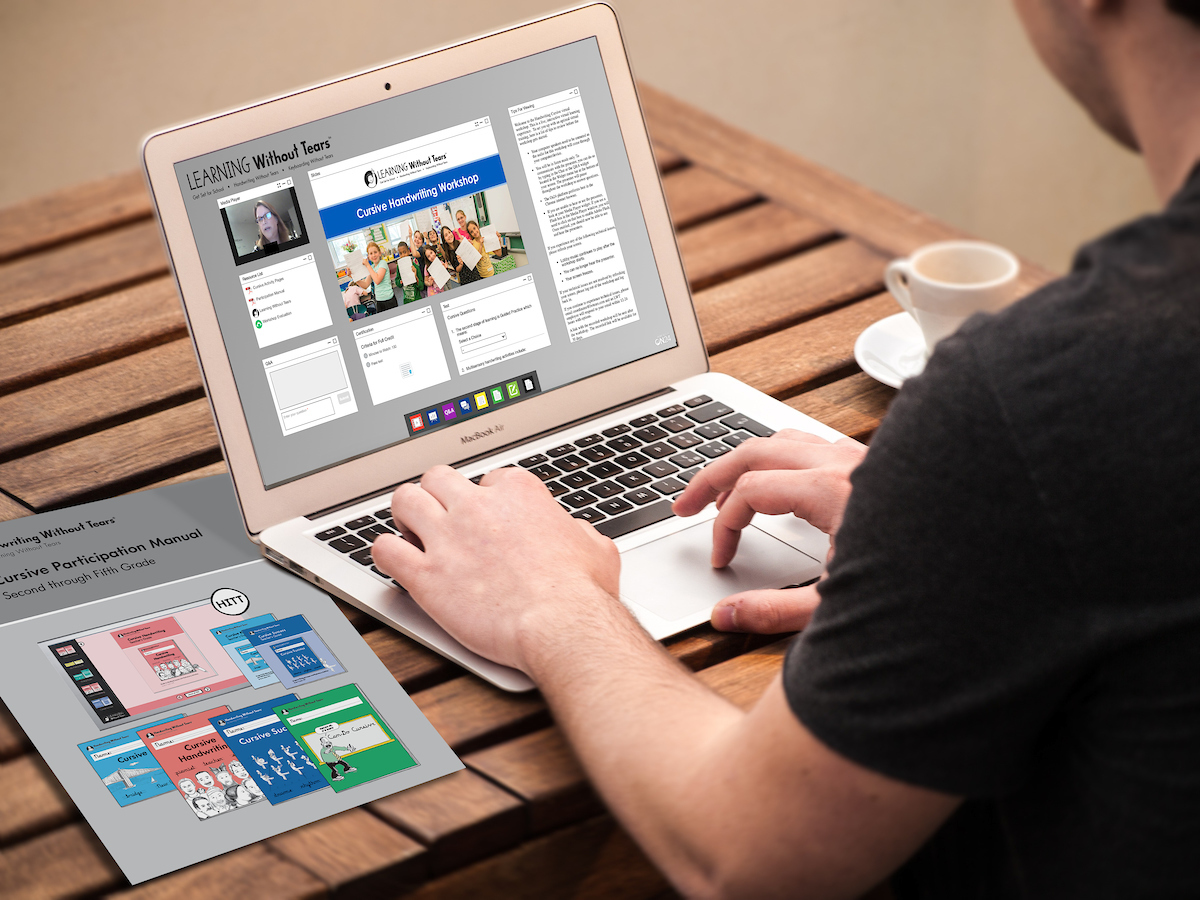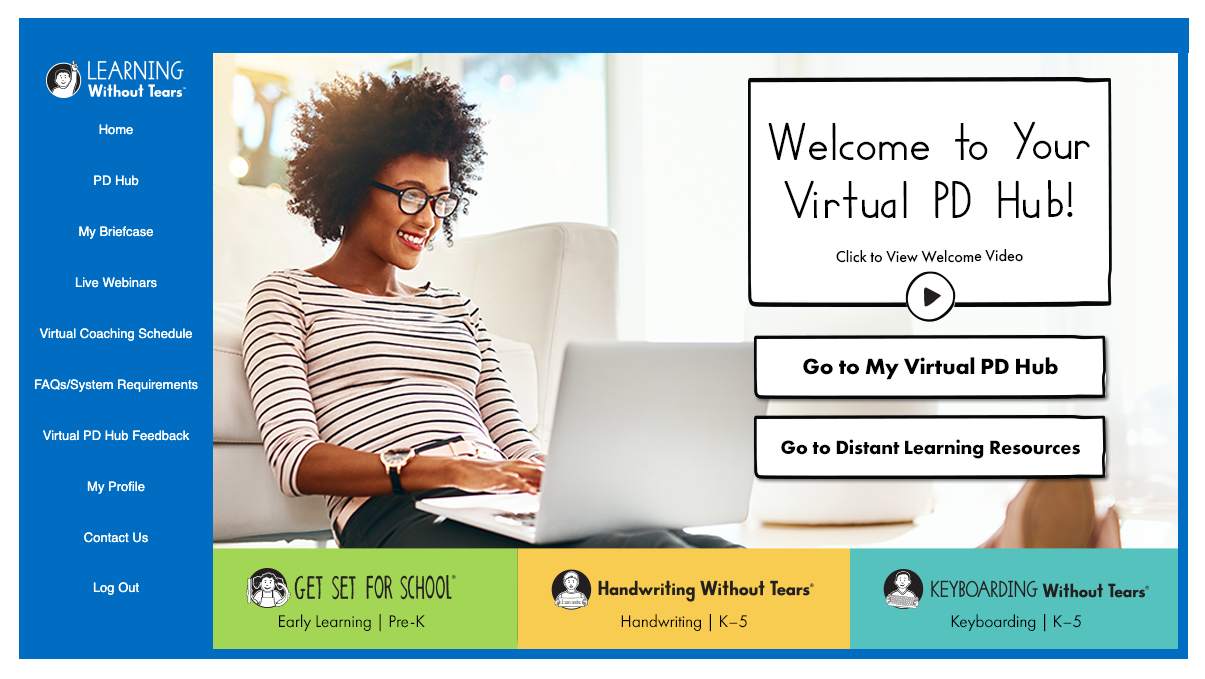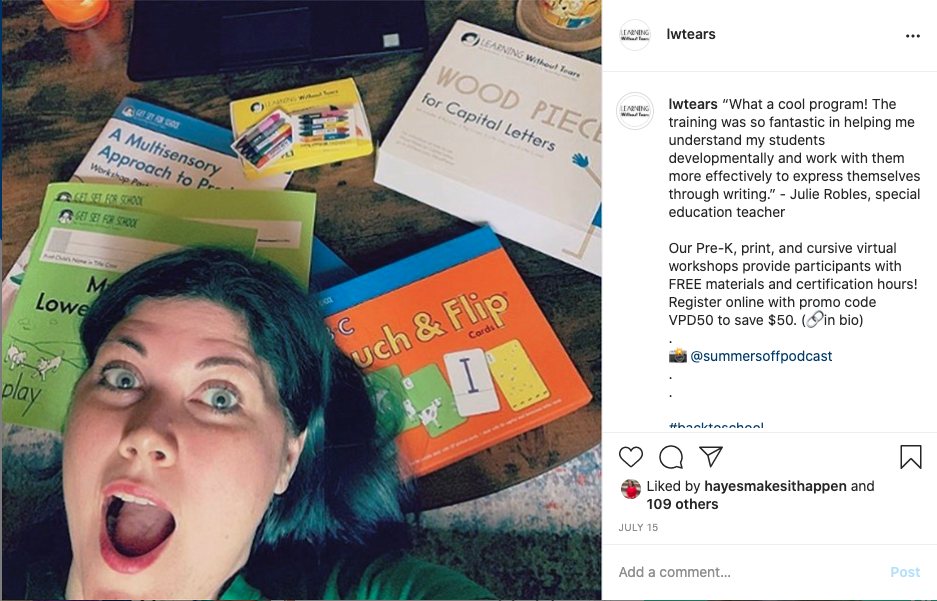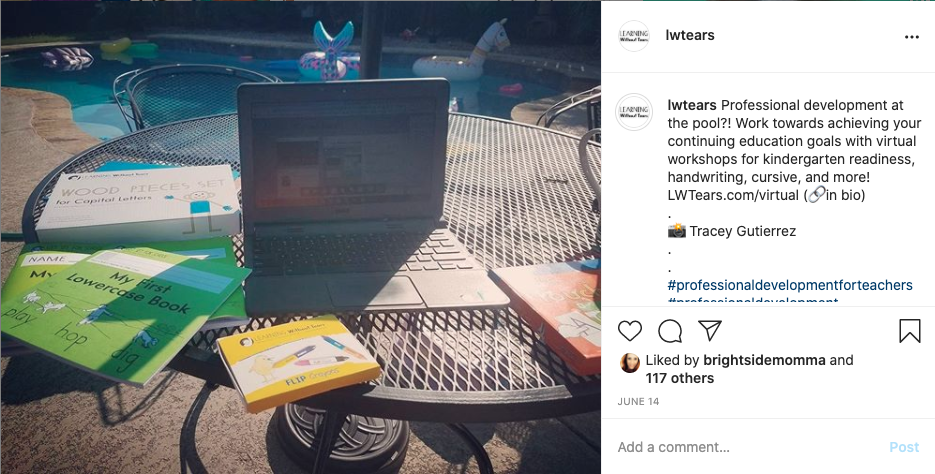Virtual (or online) professional development and learning are commonplace in today’s world.
Kids, teens, and adults are doing it. But as adults, we have to learn how to manage the multi-tasking part of our lives to get the most out of our trainings. I remember back in 2019 (I bet you can remember it too, LOL), I could leave all my distractions at home or work and attend a course. The biggest challenges I faced as an in-person learner was arriving on time (so I didn’t miss anything) and my phone buzzing with incoming emails. I bet you can relate to those too…good memories! But today, we face more challenges with virtual learning for our professional development courses.

So here we are, learning virtually as adults, which is something I did not envision when I tried to imagine the future.
As an occupational therapist, I have attended a lot of professional development in my 30-year career and as a National Presenter for Learning Without Tears (LWT), I have trained thousands of adults. I have learned what it takes to make professional development learning successful for myself and my attendees and I would like to share with you how to make those strategies work for you as an adult participating in virtual learning.
Get Ready
Getting ready for virtual learning means so much more today than it did a year ago when your trainings were most likely in-person. You’ll still need to do many of the things you did as an in-person learner, but now you have more to consider. Here are some additional suggestions for effective virtual learning.
- Ready your space
Find an area that has limited distractions. I know what you’re thinking, “yeah, right…in my dreams." But seriously, think about where you will learn best that has a workstation, a comfortable chair, and limited distractions. I like to have a blanket nearby in case I get too cool, some water, reliable internet (this is a MUST), notepad and pen, and any materials I need for the course. Pre-print any handouts that are sent and check the requirements for logging in with the computer you will be using before your session. Oh yeah, and that computer…make sure it is charged or you have it plugged in. - Ready yourself
Get yourself physically ready on the day of the training. I don’t know about you, but I am more productive when I have changed out of those comfy PJs and prepared for learning just like I did for in-person courses. I’m not saying to “dress-up," just get ready for the day. Experts and behavioral scientists agree that “getting ready” improves our moods and productivity while reducing stress and anxiety. And I know we could all use an extra serving of that…yes, please!
Stay Engaged
Learning virtually has its advantages and disadvantages. It’s simply too easy these days to log in for training and check out of the learning process. We learn by doing: taking notes and participating in discussions. We also get sluggish just sitting and not moving. So here are some tips to keep you engaged during Virtual Learning.
- Set a Learning Goal
Before your course begins, think about what you want to learn. Set a personal learning goal for yourself, write it down, and make it tangible so you can measure it at the end of the course. - Actively Participate
Online learning is more fun and engaging than ever. With technology, we are able to connect with each other in new ways. Participate in the group discussions, ask questions, and complete the activities to enhance your learning. If the platform supports images, create and use a bitmoji for yourself. It’s always fun to have an identity….even in an online training.
Here’s mine:
Sitting for long periods has a negative effect on our brains and bodies, so move if that is one of the learning activities. Actively take notes…which, by the way, helps to make deeper connections in your brain for recall and learning. And make sure to stand up from time to time. I keep a box beside my desk so I can quickly change my workstation to a standing desk with a quick switch. - Keep Focused
Stay alert and motivated by making your environment comfortable. Have some snacks and water nearby. Studies have shown that sipping a drink through a straw and snacking on crunchy or chewy foods can improve focus and attention. Lastly, wear headphones or earbuds to focus your listening skills while limiting other sounds and distractions from your environment.
Finish What You Started
At the end of your virtual course, wrap it up the way you would an in-person training. I know what you’re thinking, "I can do that later," but here’s the deal, most likely you won’t. Your future success in implementing the skills or strategies you just learned depends on the plan you make right now. Don’t let the time and effort you put into virtual learning get lost in the shuffle. Make a plan now, it only takes a few minutes.
- Organize
At the conclusion of your virtual learning, make a folder for all of your notes and handouts. Print any certificates of attendance and make note of the date and time of your training for your records. Keeping your notes and handouts organized will make it easier for you to look back at them later. At the very least, take time to staple or paperclip them together.
- Make a Plan
You may feel like moving to the next item on your to-do list, but wait….not so fast! Take a couple of minutes to think about what you want to do next and what you don’t want to forget. Make a plan to continue your learning and what your next steps will be. Maybe you want to look for a similar course to give you more training or maybe you learned something that piqued your interest and you want to learn more about that topic. Whatever it is, identify it before you forget it. And with any good plan, writing it down is important!
Lastly, check the personal learning goal that you set at the beginning of your training. Did you achieve it? If so, that’s great! If not, what can you do to get there? I suggest your plan include ways to continue your learning, even if you did achieve your goal.
I hope you’ve found some of the tips helpful as you prepare for virtual learning as an adult.
At Learning Without Tears, we offer engaging virtual trainings for Pre-K, Printing and Cursive Handwriting, Keyboarding, and Handwriting Assessments. We bring virtual learning to your computer with engaging content and digital interaction to keep you focused and learning while having fun!
View all of our virtual training topics here.
And to keep you learning all year, we also offer a Professional Development HUB that puts learning at your fingertips.
Our PD HUB helps you continue your learning and allows you to do it on your schedule with informative and easy-to-follow learning paths in our Learning Without Tears curricula. I hope you check it out. And, if you attend one of our virtual trainings, you will receive a free year subscription to our PD HUB.

Have fun learning virtually! If you ever find yourself in one of my trainings, be sure to give me a shout-out in the discussion panel. I’d love to hear from you!

